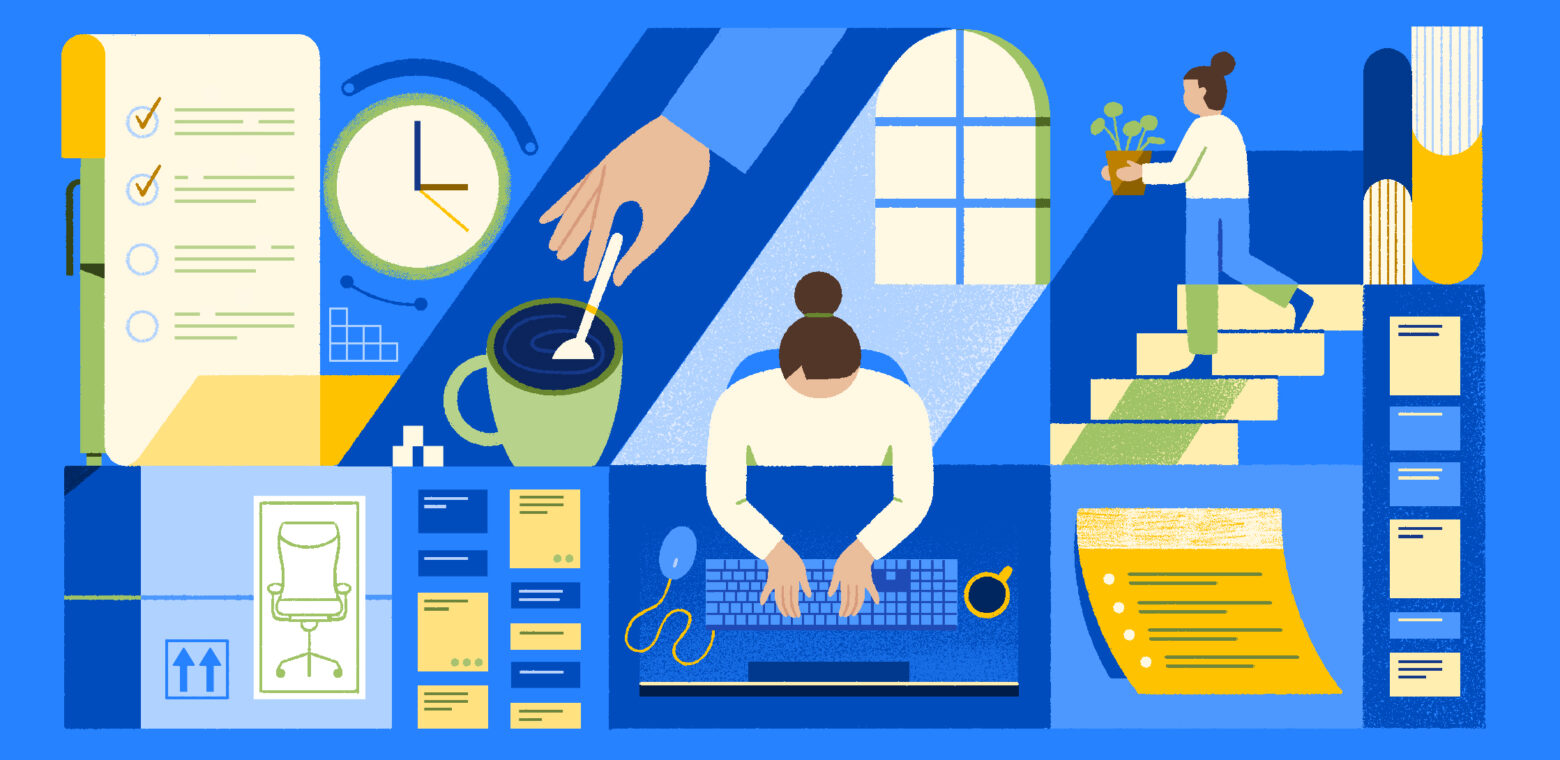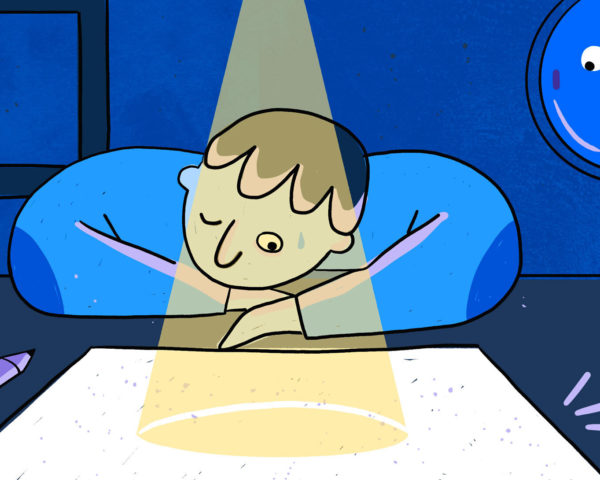You reach the end of your workday and glance down at your (now coffee-stained) to-do list.
You’re immediately overcome with frustration as you realize that barely half the tasks are checked off.
Seriously, what happened? You’ve been at your desk for the better part of eight hours. Why didn’t you get more accomplished?
Maintainin a high level of productivity is not intuitive or easy – but you don’t have to resign yourself to feeling discouraged and depleted at the end of every workday. We rounded up ten top-notch, rock-solid tips you can put into play to channel your focus, and defeat your to-do list – plus a quiz to help get you started.
1. Manage your energy, not just your time
“People naturally have ebbs and flows in their work processes or in how well they can focus,” explains Dr. Melissa Gratias, a workplace productivity coach and speaker. These peaks and valleys in your focus and motivation are naturally occurring in your body, driven by your ultradian rhythms.
You can’t compete with science. So rather than doubling down on your caffeine intake, the smarter move is to pay close attention to the times of day when you feel most energized.
Keep a journal for at least a week or two (one day isn’t long enough to identify trends) and note how you feel. You’ll have an easier time spotting your biological prime time – the times you’re most “in the zone.”
With that information, you can allocate your work more effectively. Plan your deep, complex, or creative work for your golden hours (you can even block off your calendar) and save menial tasks for the times when you feel a little more drained.
2. Build a better to-do list
“The critical behavior that I advise people not to fall into is setting yourself up for failure before the day even begins,” Gratias says. “If we pull out a task list of 25 things to do, we’re guaranteed that we’re going to be disappointed in our progress at the end of the day.”
Try whittling down to your priorities – Gratias recommends choosing between five and nine tasks you want to make progress on that day. This ties back to a psychological principle called “The Magical Number Seven, Plus or Minus Two.”
Other people swear by the similar 1-3-5 rule for an empowering to-do list. Pick one big thing you need to accomplish that day, three medium things, and five little things.
If you’re really struggling to figure out what deserves some real estate on your list, use an Eisenhower Matrix (sometimes called a prioritization matrix) to sort through your tasks and determine which ones deserve top billing – and which ones can be delegated or fall off your list entirely.
3. Tune out distractions
“Distractions and interruptions are for sure an impediment to productivity,” says Gratias. She explains that these distractions fall into two different categories:
- Self-imposed: distractions within our control, like the notifications we receive from our devices, which we have the power turn off.
- Environmentally imposed: distractions that we can’t control as easily, like a colleague dropping by our desks.
And it’s not only the distraction itself that robs you of your time – it’s also the time and energy you have to spend refocusing (which research has shown can take upwards of 23 minutes).
While Gratias cautions that you’ll never completely eliminate distractions, you can reduce them by:
- Closing out your email tab or setting up an autoresponder
- Switching your phone and instant message platform to “do not disturb” mode
- Using a browser blocker (like StayFocusd) to avoid time-wasting sites
- Putting on headphones to block out environmental distractions
4. Focus on one thing at a time
“‘I am a great multitasker!’ That’s my favorite misconception that I hear from employees,” explains Dr. Larry Rosen, Professor Emeritus and former Chair of Psychology at California State University Dominguez Hills.
Here’s the thing: Research shows that the human brain is actually incapable of multitasking. Instead, you’re rapidly switching between different tasks – appropriately referred to as “task switching” or “context switching.” You’re basically interrupting yourself, and you know now that those self-imposed disruptions only tank your productivity.
So how do you get your brain to do one thing at once? Say out loud the one thing you’re going to work on (for example, “I’m going to finish this slide deck.”). And that’s it! It’s called external self-talk, and plenty of research has shown that it can have a real impact on your behavior.
5. Batch your tasks
Even if you’re technically focusing on only one task at a time, repeatedly switching between different types of work – you answer an email then update a report then work on your slide deck then answer another email – can be mentally draining.
You use different parts of your brain for different tasks, which means you’re majorly straining your noggin by not having any sort of systematic approach to your work.
Try batching your tasks, which is essentially grouping similar tasks together and doing them all at once. You can even try time blocking, where you set specific time windows for certain types of tasks (for example, you’ll answer emails from 9am to 10am).
You might still need to occasionally handle things outside of their designated time slots, but any effort to stick related tasks together will give your brain some welcomed respite.
6. Prioritize healthy habits
It’s not just the stuff you do during the workday that impacts your productivity—the things you do outside of work carry a lot of weight too.
Maintaining healthy habits is a lot easier said than done, but even seemingly small changes can have a big impact on your energy levels, focus, and overall mood. Here are a few quick things to try:
- Drink an entire glass of water before your morning coffee
- Set a timer every hour to get up from your desk and stretch
- Move your bedtime up (even a half hour helps) to get a little more sleep
7. Take a break (or a few)
It’s tempting to think that more time at your desk means you’ll get more done. But in reality, studies show that taking regular breaks can can actually boost your productivity.
If you’re prone to getting sucked into your work and forgetting to step away, using a time management method like the Pomodoro Technique will ensure you get up for a five-minute break between every 25-minute work period.
Want to maximize your impact in that short time away? Head outside for some fresh air. Studies show that getting out into nature can alleviate mental fatigue.
8. Refine your workspace
That majority of us who suddenly found themselves working from home in Spring 2020 (shudder) know how less-than-ideal surroundings can affect our productivity. That’s why it’s well worth curating a workspace that helps you feel your most focused and motivated.
That can mean something different to everybody, but here are a few suggestions:
- Invest in some ergonomic desk accessories (like a chair, cushion, or wrist rest) to support your body.
- Position your desk near a window. Natural light can boost your work performance.
- Add a plant to your workspace. One study found that people with plants nearby had a 12% faster reaction time on computer tests.
Other efforts, like relying on a password manager, creating templates, and using a centralized project management platform mean you can spend less time searching for what you need and more time focused on your actual work.
9. Change your scenery
When your environment can have such a big impact on your focus and productivity, it’s worth trying to switch it up every now and then too.
Move from your desk to answer some emails on your couch. Or bring your laptop out to your patio. Or do a few hours of work from your favorite coffee shop.
Not only does this build in an extra break (you have to pause what you’re doing and relocate), but it also helps you buckle down. Your brain loves novelty and releases dopamine when it’s presented with something new and exciting. Dopamine isn’t just a “feel good” brain chemical – it’s a powerful motivator too.
10. Let go of perfectionism
“I think one of the most insidious beliefs that limits productivity more than anything else is perfectionism,” explains Gratias. This perfectionism not only leads to failure to start things because “if we can’t finish them perfectly, we don’t even begin,” but it also eventually leads to failure to finish because “if it’s not perfect, we keep working on it and keep tweaking it.”
While this desire to do spotless work is admirable, it can also significantly hinder your progress and productivity.
How can you stop obsessing and focus on progress over perfection? When you have a task or a project, set a timebox (i.e. a certain span of time, such as 15 minutes or an hour) that dictates how long you’ll work on that specific item. When the timebox ends, that task is as done as it’s going to get for now.
Not only does this tactic instill a sense of urgency (which inspires you to get moving), but it also removes some pressure – you’re more focused on seeing how much progress you can make in that time period, rather than working until the entire task is completed.
Take control of your productivity at work
Most of us have a lot to do. But even with high expectations and the best intentions, it’s hard to muster the motivation and make the most of your time at work.
The truth is that you’re human – you won’t operate at peak efficiency all day every day. But there are still plenty of things you can try to boost your productivity levels and transform that end-of-day glance at your (reasonable) to-do list from disheartening to gratifying.











































